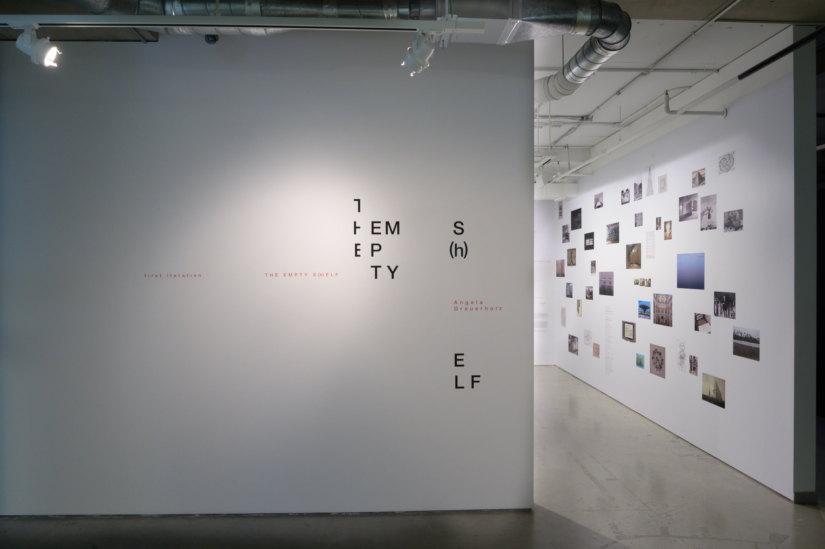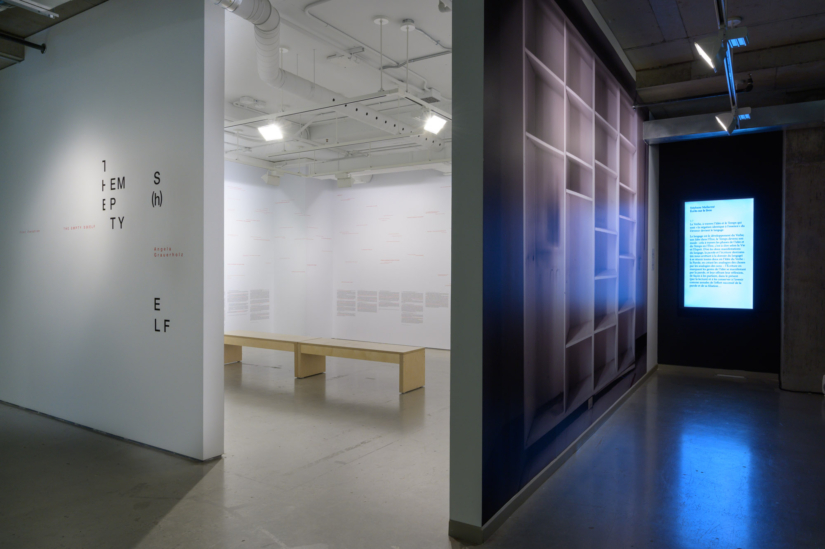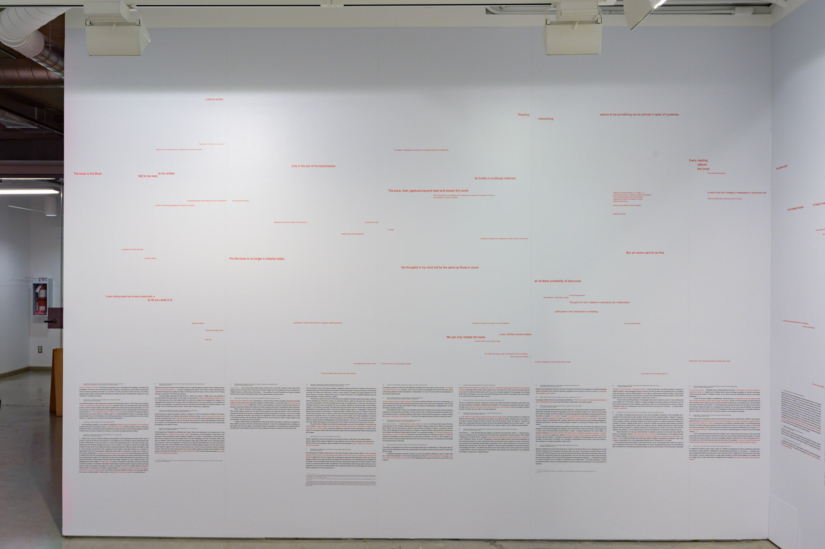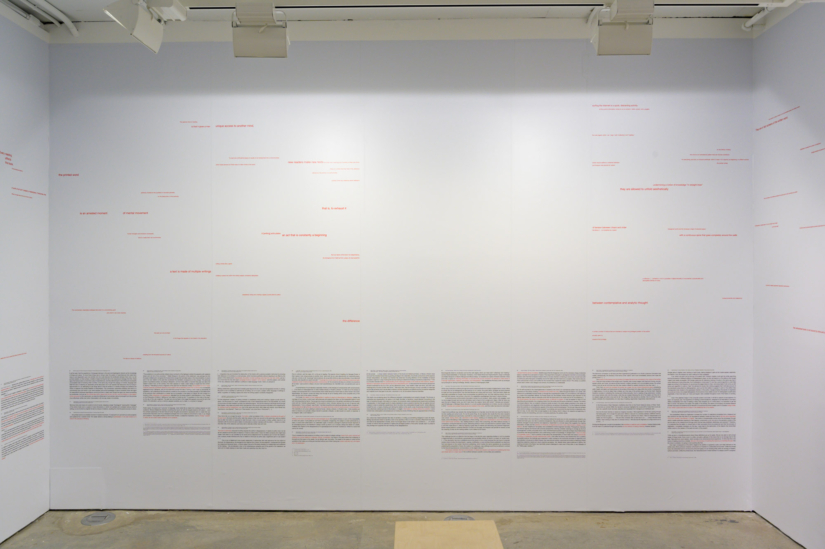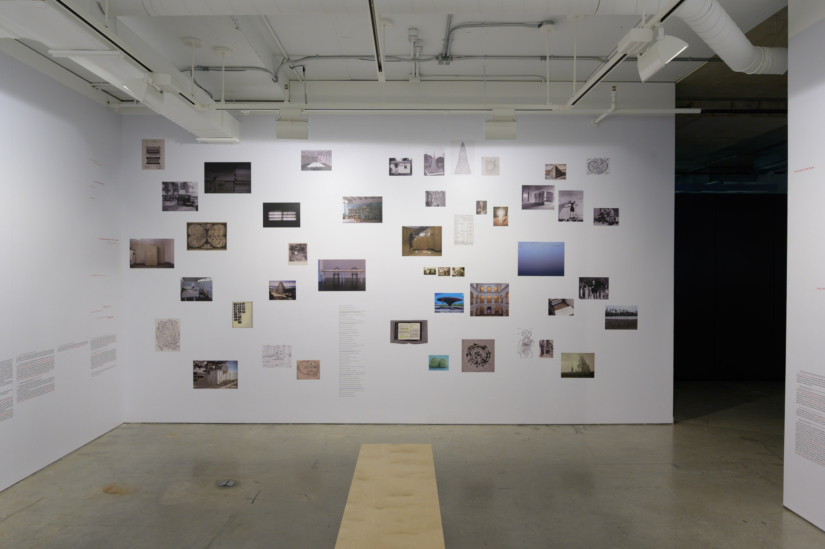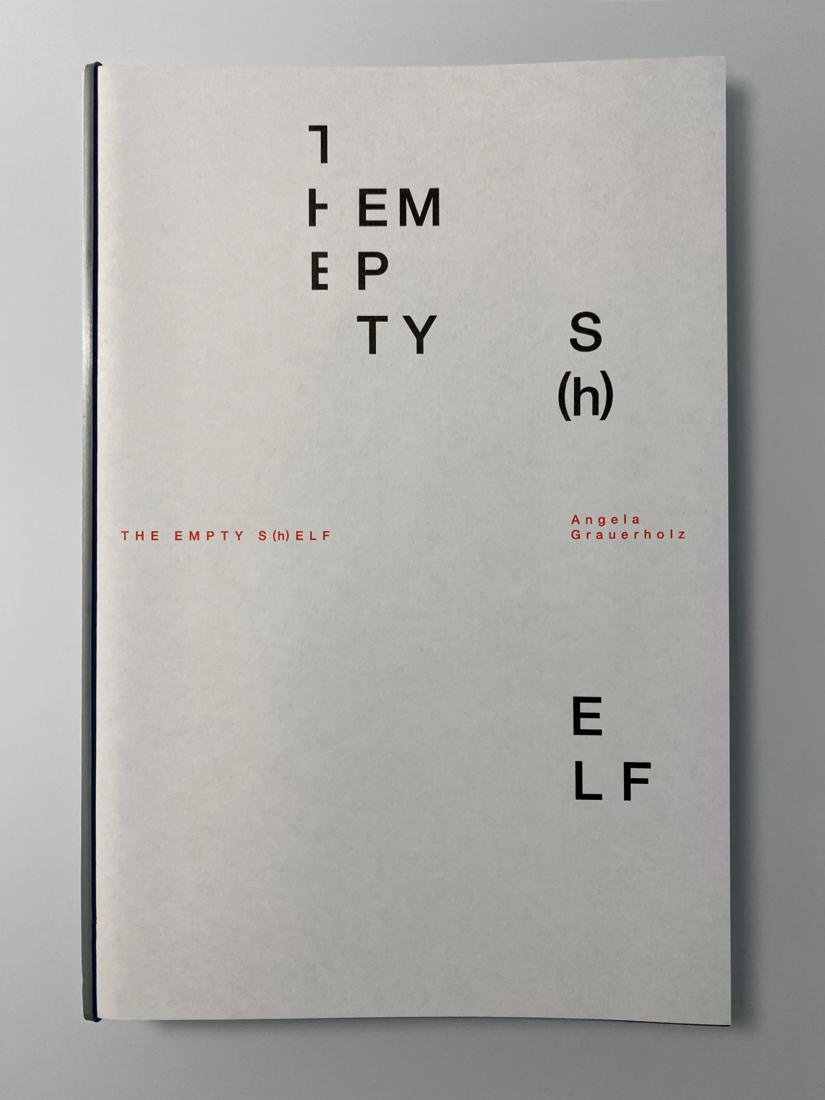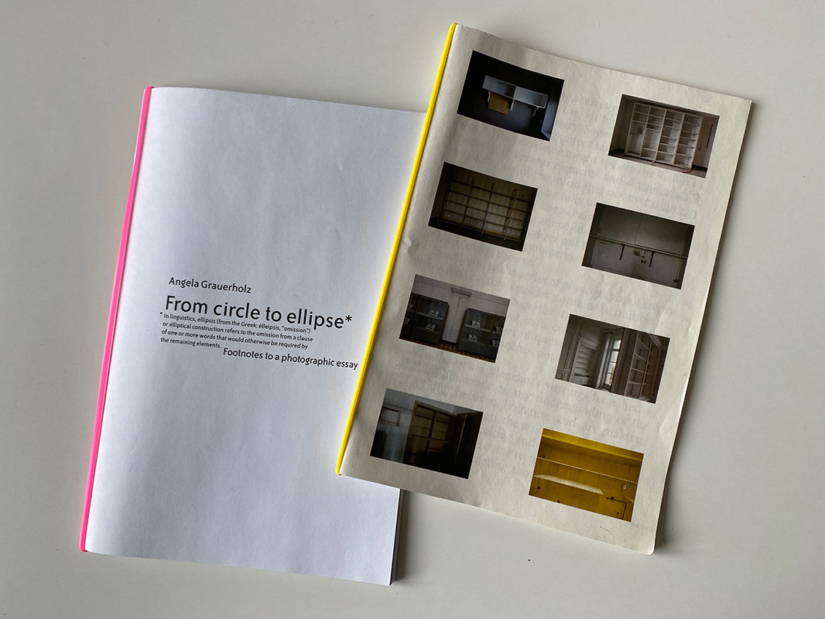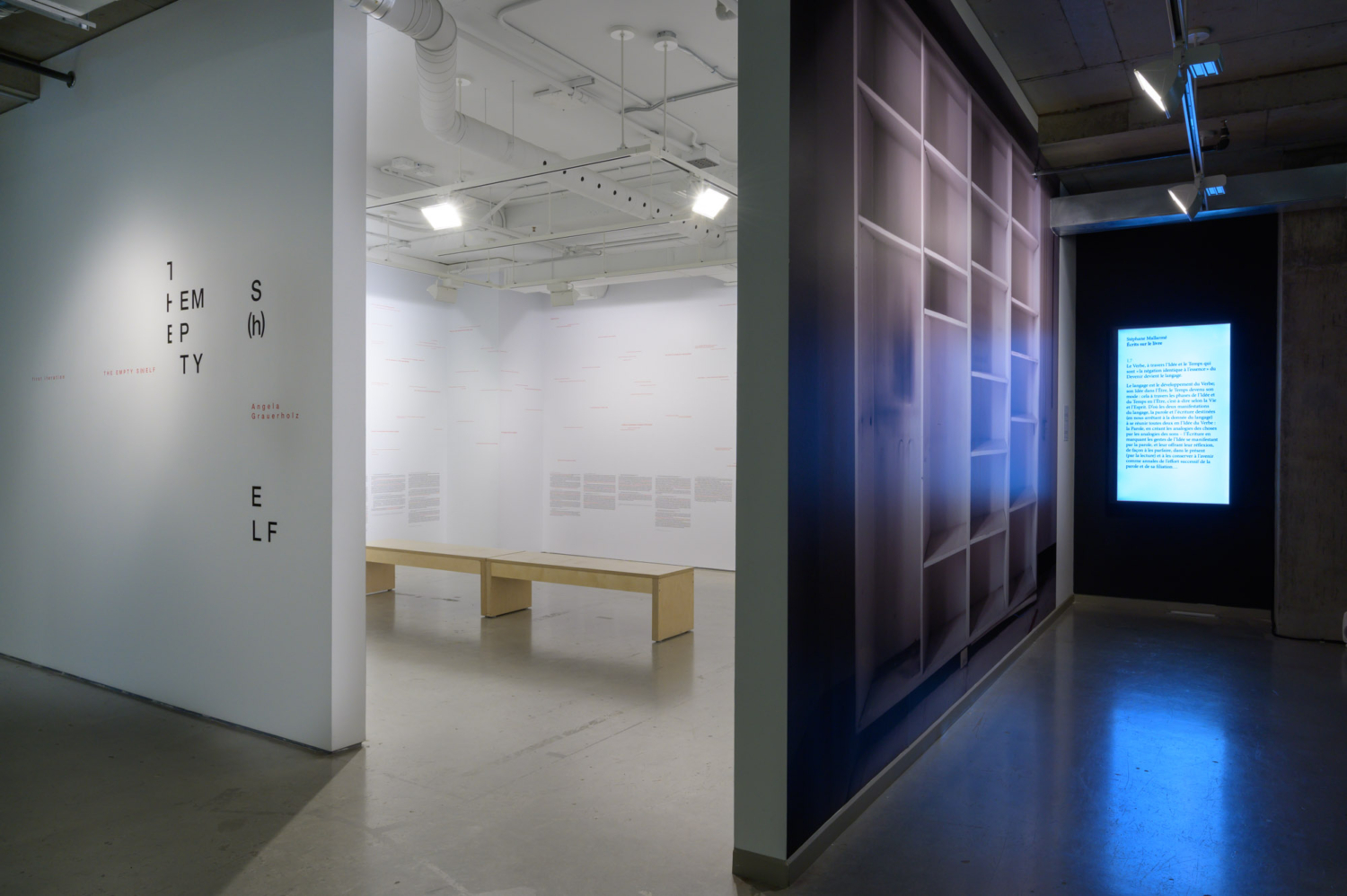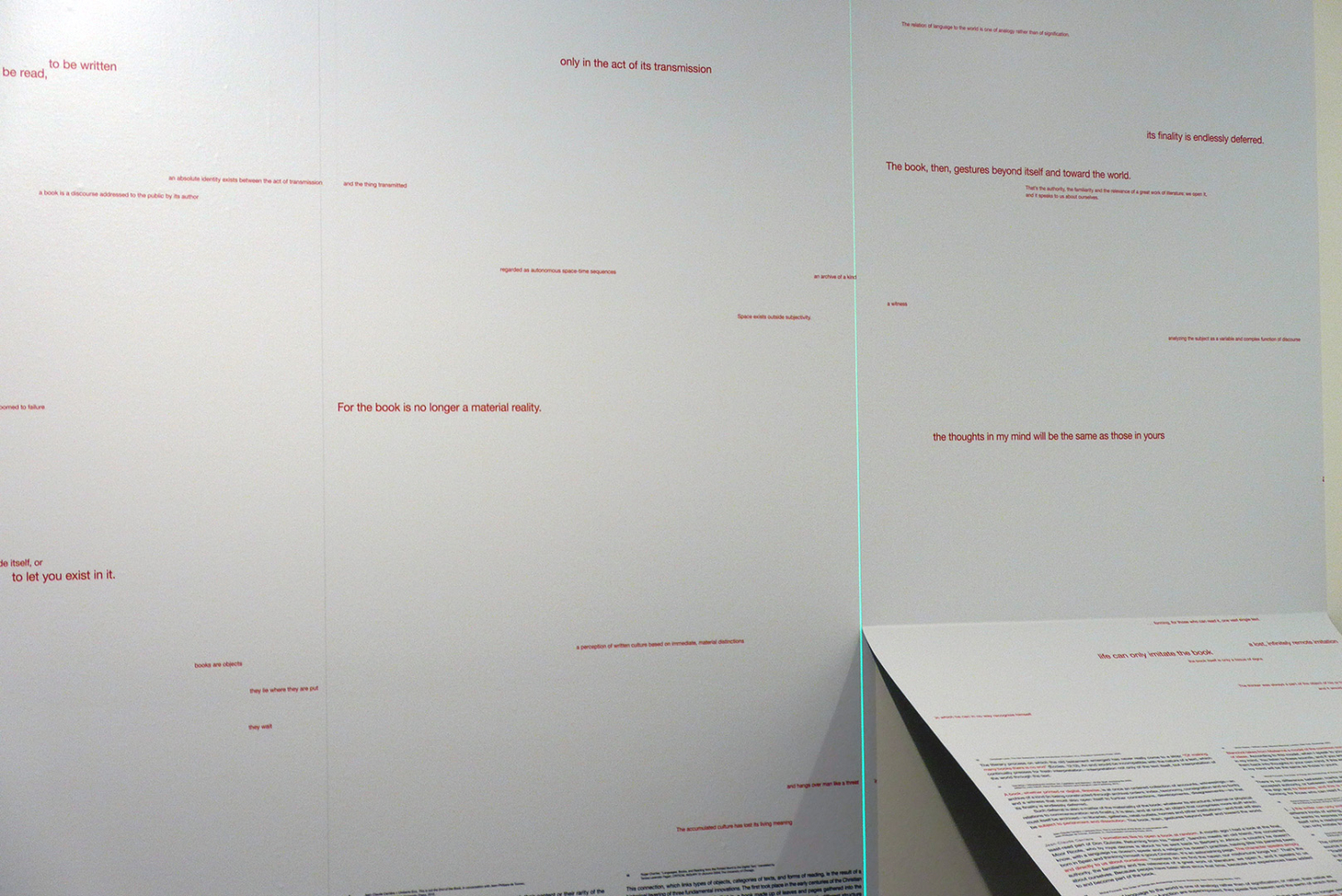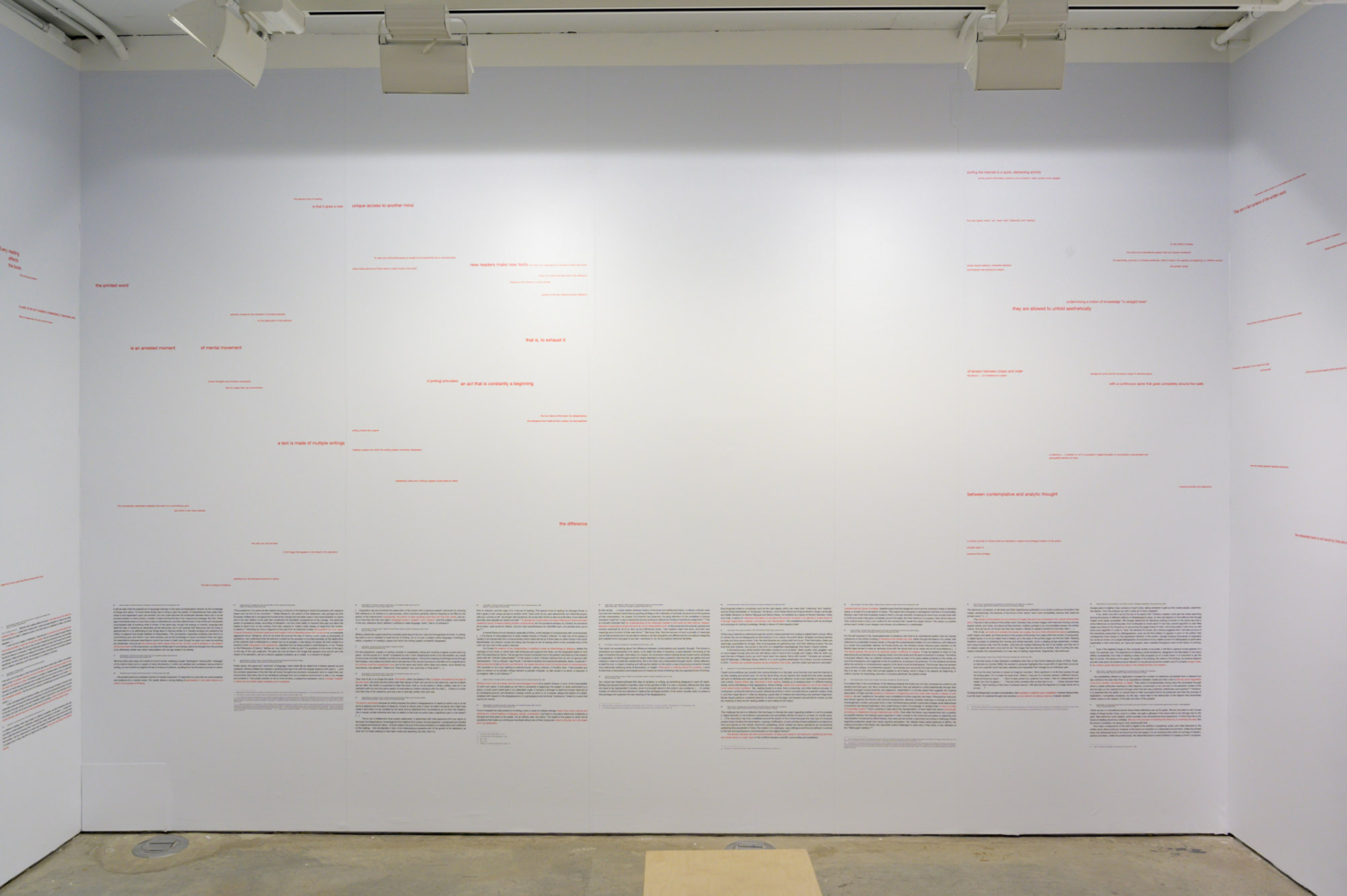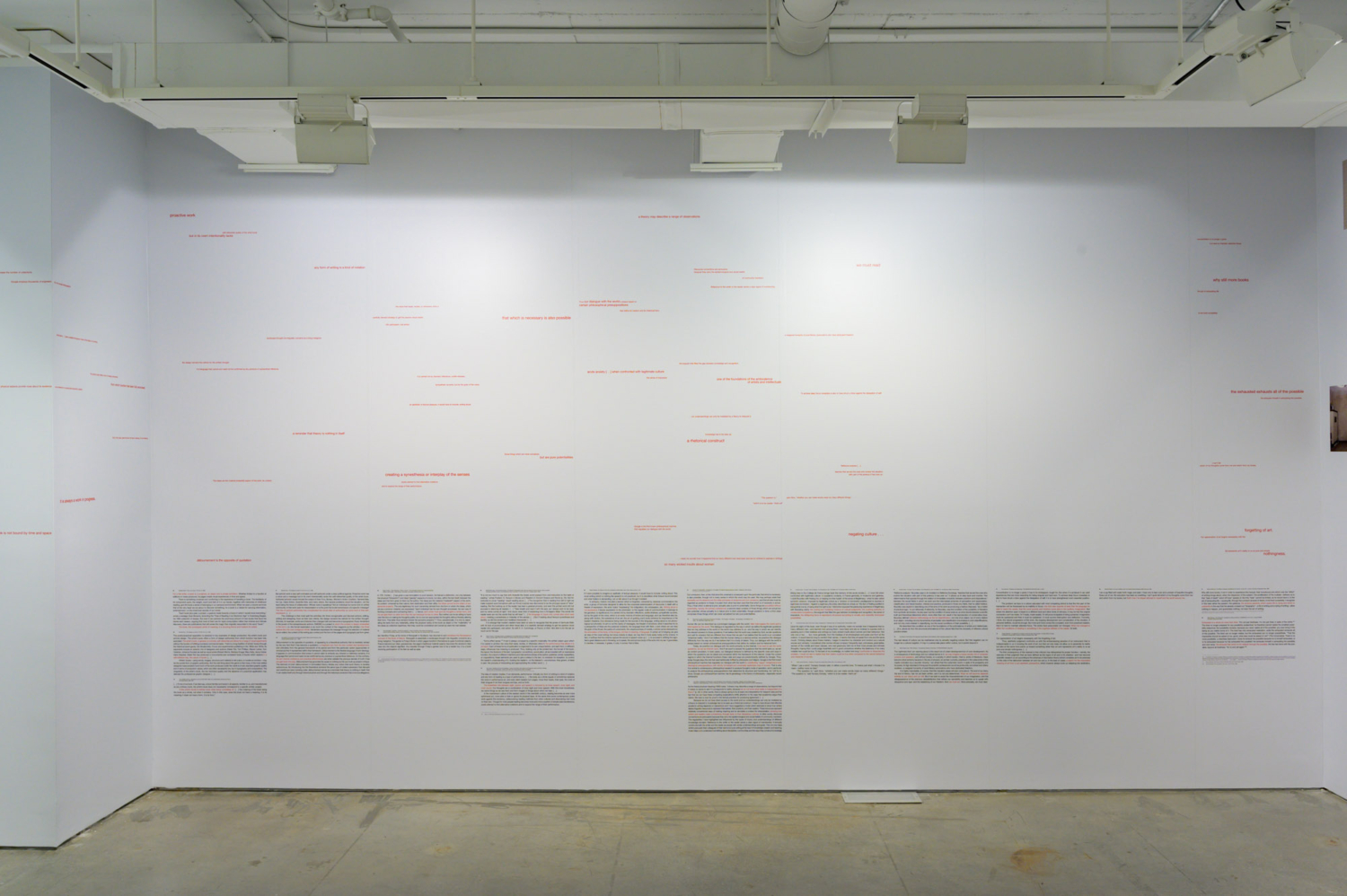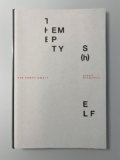2019-20 The Empty S(h)elf —
I
Statement / Démarche
The Empty S(h)elf —
I
Benjamin, who for his entire life pursued the idea of writing a work made up exclusively of quotations, had understood that the authority invoked by the quotation is founded precisely on the destruction of the authority that is attributed to a certain text by its situation in the history of culture. Its truth content is a function of the uniqueness of its appearance, alienated from its living context in what Benjamin, in his “Theses on the Philosophy of History,” defines as “une citation à l’ordre du jour” (“a quotation on the order of the day”) on the day of the Last Judgment. The past can only be fixed in the image that appears once and for all in the instant of its alienation, just as a memory appears suddenly, as in a flash, in a moment of danger.
—Giorgio Agamben
In her discussion of photography, Susan Sontag draws a curious analogy between the non-linguistic property of the photographic image and the linguistic act of quotation. She writes, “Photographs—and quotations—seem, because they are taken to be pieces of reality, more authentic than extended literary narratives” (1973: 74). Sontag casually evokes this analogy as if the concept of “authenticity” implied in the photographic mode of inscription and the linguistic act of quotation needs no further explanation. If we follow Sontag, a photograph does not only signify, but it also presents itself as a special kind of inscription that reproduces and repeats the “real” or the “original.”
—Walter de Gruyter
Several years ago, in re-reading a passage of the Library of Babel by Jorge Luis Borges, an unusual expression caught my attention, namely the “continuous spine,” in this sentence: “Mystics claim that their ecstasies reveal to them a circular chamber containing an enormous circular book with a continuous spine that goes completely around the walls.” This somewhat absurd idea perfectly encapsulates the qualities I mean to bring to The Empty S(h)elf, implicitly alluding to the potential infinity as the essence of a book, as well as naming the symbolic value of the book as the vessel of knowledge and insight.
In this first iteration of The Empty S(h)elf, the allusion to the book is of course intentional, as the work takes the form of a spatialized text—introducing the notion of paratextual elements in the form of footnotes.1 While an actual text is absent and appears to have been replaced by a meta-layer of textual bits and pieces seemingly floating up from the footnotes, an alternative and somewhat abbreviated form of reading might be proposed here. One could be visually reminded of the famous poem by Stéphane Mallarmé, Un coup de dés jamais n’abolira le hazard, as well as his extensive writings toward the elaborate and “forever absent” book Le Livre—repeatedly and very beautifully discussed by Maurice Blanchot in The Book to Come (and others). Mallarmé’s work has fed our imagination and reflections on the potentiality of reading and writing for more than a hundred years.
While several aspects of The Empty S(h)elf are clearly similar to my earlier explorations in method and process (such as Reading Room for the Working Artist, 2003/2004), this work required the development of an entirely new archive of images and texts. Originally planned to have little imagery, I was fortunate to come upon situations in which I was able to photograph many shelves that had been emptied of their contents.2
In The Empty S(h)elf, the title’s play on words alludes to the fusing of two very different ideas: that of the empty library, a dystopian image of the future of the book; and that of the empty self, suggesting an individual’s inner void or absent self. However, to acknowledge the “construction” of self through—apart from experience, of course—reading, dialoguing, discourse or writing, and the “construction” of a book’s content through the very same activities, is to recognize or propose each entity to be additive and evolutive, in much the same way as the project as a whole will unfold over time—I am proposing about five iterations of The Empty S(h)elf.
This project began with one file from my last archive for Reading Room for the Working Artist. It grew steadily with the expansion of the archive to also accommodate the web piece www.atworkandplay (2009), and which consequently continued to grow, as it was becoming ever more important in my mind. This file—containing mostly texts (and some photos) from various authors exploring the idea of the lost or non-existent self (“Being No One”), autobiography, failing memory, self-consciousness, self-harm, nothingness and much more—now titled “The Empty Self,” was originally named after one of Beckett’s teleplays, “Not I” which was most amazingly interpreted on stage and on television by Billie Whitelaw, the British actor. So it was many years ago that I had my first impulse to investigate this notion of self, not identity—which is undeniably also part of it—but the idea of soul and self. Both expressions (or words), have been historically linked since the early Greeks, and we tend to nonchalantly put them out there without really questioning their origins or their very existence.
The idea for the play on words in the work’s title came quite early in the explorations for this piece, but it also grew out of an encounter with Dominique Scheffel-Dunand, then-director of the McLuhan Institute (now the McLuhan Centre for Culture and Technology at the University of Toronto). She was interested in finding alternative ways to construct an anthology of texts into a mosaic of quotations with papers from a conference celebrating Marshall McLuhan’s 100th birthday. We never found specific solutions to her proposal, but in reading several texts by and about McLuhan, I became interested in a particular academic language and the ways certain nascent aspects of theoretical developments or even models were expressed. This part of the project will be the subject of a future iteration of The Empty S(h)elf, as will be the actual discussion of the self where I intend to continue to address questions about the creative impulse and the need to learn and explore.
The words “writing” or “author” have become synonymous in my mind to “creating, making (art), thinking” etc. (same for author(ship), “originator, artist etc.”). There are big differences between how a critic or a writer talks about artwork, and for my part, I have found reading literary texts more stimulating and helpful when thinking and formulating works of art with textual and visual material. My first photograph of an empty shelf was taken in a library in Nogent-sur-Marne and in a way it gives a false impression, as all the other shelves were full. But what I had not realized then was that these images of empty shelves were one possible vision of the future, as much as the shelves stuffed with old magazines and crumbling books that would never be read again meant that they were in effect dead or should be. An empty shelf can be innocuous, but it can also be a foreboding image of what is to come.
To think of the archive as one image (or one text) composed of many led me to explore the possibilities of architectural structures to house photographic collections (Eclogue or Filling the Landscape, 1995; Aporia, 1995; and Sententia I-LXII, 1999), and eventually it seemed logical to draw an analogy to the book—its structure, form and content. But it was especially after the loss of my library due to a fire that I focused on the book as object (Privation, 2001) and as a space for mapping out ideas about the way we decipher the inner and outer world of an artwork. As a source of knowledge and as an art form, a book becomes as much a type of monument as a museum, a space one passes through and returns to.
My continuous interest in the way one authors a book and/or how one develops one’s own work in a changing landscape of institutions and in the digital age, are all part of this first iteration of The Empty S(h)elf. For me, making choices in my readings, observing what I pay attention to, choosing what to use in order to make a work is an act of formulation, of constructing thought and distinguishing what is different or important to me and what I wish to communicate. I have often felt that reading was a creative act in and of itself, a proposal I eventually found in Sartre, who made a similar claim.3
In much the same fashion, as impossible as it may be to determine which image in a mass of potential images can be considered significant today, one attempts and needs to make these choices all the time. This is perhaps the heart of the matter: a book or a work of art is a place where reader and writer (viewer and artist) encounter one another and the possibility for something to happen is given, and might continue to exist in the memory of those who have found themselves in that presence of the other, through a text, through a work of art. It is a situation where the possibility for an understanding, a meeting of minds, a reflection of one another’s interests, desires and fears has been opened up. This complex idea, one that our individuality might want to resist, is also reassuring, as it is one of those rare moments of knowing that we are not completely isolated in our thoughts, and that in trying to understand a particular problem or puzzling moment in art, we might just find ourselves.
1
I have used this gesture before, in a small text about the geometry of seeing. See Angela Grauerholz, “From circle to ellipse: footnotes to a photographic essay,” Nexus Network Journal (Architecture and Mathematics Online), ed. Robert Kirkbride, vol. 12, no. 3 (Turin: Kim Williams Books, 2010).
2
A first introduction of a large selection of these images of empty shelves was shown for the first time during the Chennai Photo Biennale in 2019. See “The Book is the Book,” text excerpts from The Absence of the Book by Maurice Blanchot, brochure accompanying the installation at the Madras Literary Society, Chennai Photo Biennale 2019 (available for consultation during the exhibition). Art 45 (Montréal) showed two examples of The Empty S(h)elf series in 2018.
3
See J. Yellowlees Douglas, The End of Books—or Books Without End? Reading Interactive Narratives (Ann Arbour: The University of Michigan Press, 2000).
The Empty S(h)elf —
I
Benjamin, qui pour sa vie entière a poursuivi l’idée d’écrire un texte composé seulement de citations, a compris que l’autorité invoquée par les citations est fondée précisément sur la destruction de l’autorité qui est attribuée à un certain texte par sa place dans l’histoire de la culture. Sa vérité historique est une fonction du caractère unique de son apparence, aliénée par son contexte vivant dans lequel Benjamin, dans « Sur le concept d’histoire », définit comme « une citation à l’ordre du jour » pour le jour du Jugement dernier. Le passé peut seulement être fixé dans l’image qui apparait une fois pour toute dans l’instant de son aliénation, comme un souvenir qui surgit soudainement, tel un éclair, dans un moment de danger.
—Giorgio Agamben
Dans son commentaire sur la photographie, Susan Sontag établit une curieuse analogie entre la caractéristique non-linguistique de l’image photographique et l’acte linguistique de la citation. Elle écrit : « Les photographes — et les citations — semblent, puisqu’ils sont des morceaux de la réalité, plus authentiques que les longs récits narratifs littéraires » (1973 : 74). Sontag évoque nonchalamment cette analogie, comme si la notion de « l’authenticité » supposée dans le mode de l’inscription photographique et de l’acte linguistique des citations n’avait pas besoin davantage d’explications. Si nous suivons l’exemple de Sontag, une photographie non seulement signifie, mais aussi se représente comme un type particulier d’inscription qui reproduit et répète le « vrai » ou « l’original ».
—Walter de Gruyter
Il y a plusieurs années, durant une relecture d’un passage de la Bibliothèque de Babel de Jorge Luis Borges, une expression inhabituelle attira mon attention, celle de « dos continu » dans la phrase suivante : « Les mystiques prétendent que l’extase leur révèle une chambre circulaire avec un grand livre circulaire à dos continu, qui fait tout le tour des murs ». Cette idée un peu absurde englobe parfaitement les qualités que je compte apporter à The Empty S(h)elf, faisant implicitement référence au potentiel infini comme étant l’essence du livre et identifiant la valeur symbolique du livre en tant que vaisseau de connaissances et de lucitidité
Dans cette première itération de The Empty S(h)elf, l’allusion au livre est bien sûr intentionnelle, car l’oeuvre prend la forme d’un texte spatialisé — introduisant la notion des éléments paratextuels dans la forme de notes de bas de page.1 Bien que le texte soit absent et semble avoir été remplacé par une couche conceptuelle de fragments et morceaux de texte qui paraissent flotter au-dessus des notes de bas de page, une forme alternative et légèrement abrégée de la lecture est proposée ici. Les apparences peuvent évoquer ici le fameux poème de Stéphane Mallarmé : « Un coup de dés jamais n’abolira le hasard », ainsi que ses écritss approfondis tendant vers Le Livre, détaillé et « toujours absent » — évoqué à plusieurs reprises et discuté superbement, entre autres, par Maurice Blanchot dans Le Livre à venir. Les oeuvres de Mallarmé nourrissent notre imagination et nos réflexions sur la potentialité de la lecture et l’écriture depuis plus d’un siècle.
Bien que de nombreux aspects de The Empty S(h)elf soient manifestement similaires à mes explorations précédentes de méthode et de processus (tel la Salle de lecture de l’artiste au travail, en 2003-2004), ce travail a nécessité le développement d’une archive d’images et de textes entièrement nouvelle. À l’origine, j’envisageais utiliser très peu d’images, mais j’ai eu la chance de me trouver dans plusieurs situations où j’ai pu photographier de nombreuses étagères vidées de leur contenu.2
Dans The Empty S(h)elf, le jeu de mots du titre fait allusion au fusionnement de deux idées très différentes : celle de la bibliothèque vide, image dystopique du futur du livre; et celle du soi vide, qui suggère le gouffre intérieur ou l’absence de soi d’un individu. Pourtant, avouer que la « construction » du soi à travers la lecture, le dialogue, le discours ou l’écriture — à l’exception de l’expérience, bien sûr — et la « construction » du livre suivent le même parcours, c’est reconnaître ou proposer la nature cumulative et évolutive de chaque entité, de la même façon que le projet dans son ensemble évoluera avec le temps (je propose environ cinq itérations du The Empty S(h)elf).
J’ai commencé ce projet avec un fichier conservé de mes dernières archives de la Salle de lecture de l’artiste au travail. Le dossier a progressé graduellement avec l’élargissement des archives pour aussi inclure le site web www.atworkandplay (2009), et alors qu’il prenait de l’ampleur, il a également pris de plus en plus d’importance dans mes pensées. Ce fichier qui contenait principalement des textes (et quelquesphotos) d’une variété d’écrivain∙e∙s explorant l’idée du soi perdu ou non-existant (« Being No One »), de l’autobiographie, de la mémoire qui échoue, de la conscience de soi, des pensées autodestructives, du néant et bien plus et qui est maintenant intitulé The Empty Self, portait à l’origine le nom d’un des téléthéâtres de Beckett, Pas moi, magnifiquement interprété sur scène et à la télévision par l’acteur britannique Billie Whitelaw. C’est donc il y a quelques années que j’ai senti pour la première fois l’impulsion d’examiner la notion du soi, non pas l’identité qui en fait incontestablement partie mais bien l’idée de l’âme et du soi. Les deux expressions (ou mots) sont historiquement liées depuis la Grèce antique, et nous avons tendance à les utiliser avec nonchalance sans vraiment interroger leurs origines ou leurs existences même.
L’idée du jeu de mots du titre m’est venue très tôt dans mes explorations initiales autour de cette oeuvre, mais est aussi le résultat d’une rencontre avec Dominique Scheffel-Dunand, à l’époque directrice du McLuhan Institute (aujourd’hui le McLuhan Centre for Culture and Technology at the University of Toronto). Elle s’intéressait à l’élaboration de méthodes alternatives pour la création d’une anthologie de textes sous la forme d’une mosaïque de citations issues des allocutions présentés lors d’une conférence célébrant le centième anniversaire de Marshall McLuhan. Nous n’avons jamais trouvé de solution à sa proposition, mais en lisant de nombreux textes par et sur McLuhan en préparant mon allocution, j’ai développé une curiosité pour le développement d’un langage académique particulier et les façons dont s’exprimaient certains aspects émergeant de la réflexion théorique et de ses modèles conceptuels. Cet aspect du projet sera exploré dans une itération future de The Empty S(h)elf, tout comme la réflexion poussée sur le soi où j’envisage de continuer de m’interroger sur l’élan créatif et le besoin d’apprendre et d’explorer.
Les mots « écriture » et « écrivain » sont devenus dans mon esprit synonymes de « créer, création (artistique), penser, etc. » (et il en va de même avec être « auteur », « artiste », etc.) Il y a de grandes différences entre la manière dont un.e critique parle des oeuvres d’art et celle d’un.e écrivain∙e. Pour ma part, je trouve la lecture de textes littéraires plus stimulante et utile pour penser et formuler des oeuvres d’art à partir de matériaux textuels et visuels. Ma première photographie d’une étagère vide a été prise dans une bibliothèque à Nogent-sur-Marne, et d’une certaine manière elle donne une fausse impression car toutes les autres étagères de la bibliothèque étaient pleines. Je ne m’étais pas rendu compte à ce moment-là que ces images d’étagères vides représentaient une vision possible du futur, autant que les étagères pleines d’anciennes revues et de livres en morceaux qui ne seraient plus jamais relus étaient elles aussi mortes, ou devraient l’être. Une étagère vide peut être anodine, mais peut aussi devenir le présage de ce qui est à venir.
Penser aux archives comme étant une seule image (ou un seul texte) composée de plusieurs autres m’a amené à explorer les possibilités des structures architecturales qui hébergent les collections photographiques (« Eclogue or Filling the Landscape » en 1995; « Aporia » en 1995; et « Sententia I-LXII » en 1999) et éventuellement il m’a semblé logique de tracer une analogie avec le livre : sa structure, sa forme, et son contenu. Mais ce n’est qu’après la perte de ma bibliothèque dans un incendie que je me suis mise à considérer le livre comme objet (« Privation » en 2001) et espace de cartographie des idées sur la manière dont nous déchiffrons les mondes intérieurs et extérieurs d’une oeuvre d’art. Comme source de savoir et comme forme d’art, le livre est autant un monument qu’un musée, un espace que l’on traverse et dans lequel on revient.
Mon intérêt pour la manière dont on développe le contenu d’un livre et/ou sa propre pratique à l’ère numérique dans un paysage institutionnel en fluctuation continue fait partie de cette première itération de The Empty S(h)elf. Pour moi, faire des choix de lecture, observer ce qui retient mon attention, choisir quoi utiliser pour créer devient un acte de formulation, de construction de la pensée et d’identification des choses qui me semblent différentes ou importantes et que je souhaite communiquer. J’ai souvent pensé que la lecture est un acte de création en soi, une proposition que j’ai éventuellement retrouvé dans ma lecture de Sartre qui a offert un argument similaire.3
De la même manière, aussi impossible qu’il soit aujourd’hui de déterminer dans une masse d’images potentielles l’image la plus importante, on peut essayer ou avoir besoin de faire ces choix tout le temps. Ceci devient possiblement le coeur du sujet : un livre ou une oeuvre d’art est un endroit où lecteur et écrivain (ou spectateur et artiste) se rencontrent et créent la possibilité que quelque chose arrive, et continue d’exister dans la mémoire de celui ou celle qui s’est trouvé en présence de l’autre, à travers le texte ou l’oeuvre d’art. C’est une situation où la possibilité de compréhension, de convergence, de réflexion sur les préférences, désirs, et peurs de chacun.e est dévoilée. Cette idée complexe, à laquelle notre sens d’individualité voudra peut-être résister, est aussi rassurante car elle représente un de ces rares moments de réalisation que nous ne sommes pas complètement isolés dans nos pensées, et qu’en essayant decomprendre un problème particulier ou un moment déroutant de l’histoire de l’art, il pourrait nous arriver de nous découvrir nous-même.
1
J’ai déjà utilisé ce geste dans un petit texte sur la géométrie de la vue. Voir Angela Grauerholz, « Du cercle à l’éllipse, Notes de bas de page à un essai photographique » dans le Nexus Network Journal (Architecture and Mathematics Online), éd. Robert Kirkbride, vol. 12, no. 3 (Turin: Kim Williams Books, 2010). Une édition auto publiée du texte et des images sont accessibles durant l’exposition du The Empty S(h)elf à Artexte.
2
Une première introduction d’une grande sélection des images des étagères vides a été montée pour la première fois pendant la Chennai Photo Biennale en 2019. Voir The Book is the Book, les extraits de « The Absence of the Book” par Maurice Blanchot, une brochure accompagnant les installations à la Société Littéraire de Madras, Chennai Photo Biennale 2019. Art 45 (Montréal) a monté deux exemples de la série The Empty S(h)elf en 2018.
3
Voir J. Yellowlees Douglas, The End of Books—or Books Without End? Reading Interactive Narratives (Ann Arbour, MI: The University of Michigan Press, 2000).
(downloads / téléchargements)
The Empty S(h)elf — I
PDF Booklet / Fascicule
The Empty Shelf
PDF / Blue Book (2019 Chennai Photo Biennale)
Privation
PDF / Red Book (2019 Chennai Photo Biennale)
The book is the Book
PDF / Booklet
From circle to ellipse: footnotes to a photographic essay / Du cercle à l’éllipse, Notes de bas de page à un essai photographique
PDF / Booklet
(viewing / visionnement)
